Bausch and Lomb
by Brian Stevenson
last updated March, 2022
The partnership between John Jacob Bausch (1830-1926) and Henry Lomb (1828-1908) began in 1853, in Rochester, New York. Since that time, Bausch and Lomb has grown into a major, worldwide optical business. Much has already been written about the firm, including their microscopes. Links at the end of this essay will lead readers to web sites that show numerous examples of Bausch and Lomb’s microscopes and provide historical details.
Rather than recapitulate well-known information on B. & L., this essay will focus on a less-well known aspect of the firm: microscope slides that were retailed by Bausch and Lomb.
Slides with Bausch and Lomb’s labels appear to be relatively scarce. They fall into three classes: microscope slides by anonymous makers who used B. & L.’s labels, slides by makers who used B. & L. labels yet also signed their names, and slides bearing their maker’s personal labels along with B. & L. stickers (Figure 1).
Slides of the second and third groups include those made by well-known scientists of the time, so incorporation of their names would have been beneficial for sales. Biographical essays on people who are known to have made slides for Bausch & Lomb will be added to microscopist.net over the next several weeks.
Bausch and Lomb evidently brought in microscope slides from professional slide-makers, including Johann Möller (1844-1907), of Germany (Figures 3 and 4).
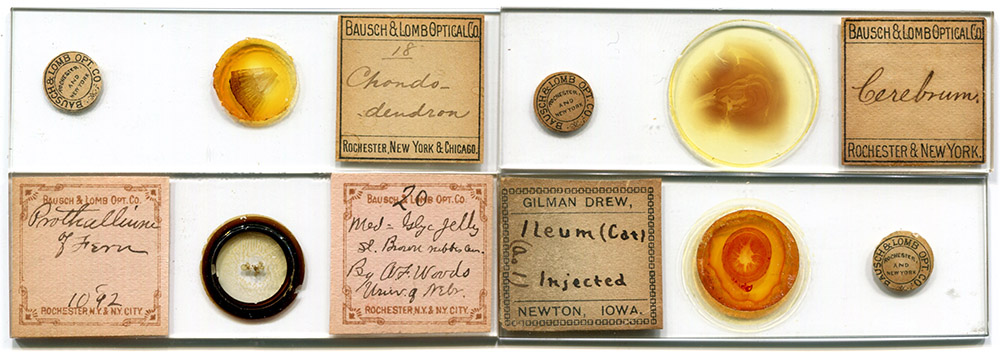
Figure 1.
Microscope slides that were retailed by Bausch and Lomb. The firm opened a branch in Chicago in 1896, dating the upper right slide to after that time. The other slides list only Rochester and New York City, and presumably date from before 1896. The makers of the top two slides are not known. The lower left slide is signed by Albert F. Woods (1866-1948), and dated October, 1892, around the time that he left the University of Nebraska to work for the U.S. Dept. of Agriculture. The lower right slide was prepared ca. 1890 by Gilman Drew (1868-1935), who later obtained his Ph.D. from Johns Hopkins University, then became Professor at the University of Maine and Assistant Director of the Woods Hole Marine Biological Laboratory, Massachusetts - it is possible that this slide was acquired by Bausch and Lomb by purchase or trade, who then pasted on their circular label for re-sale.
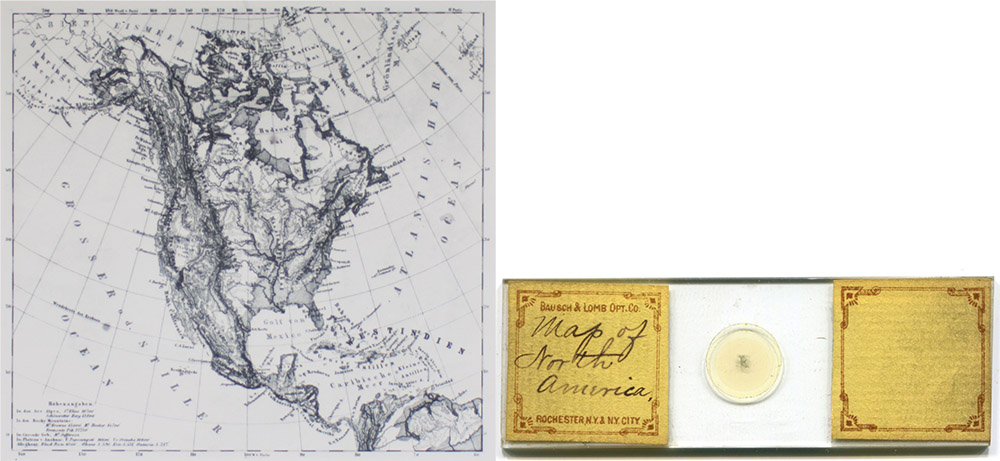
Figure 2.
“Map of North America” microphotograph, with Bausch & Lomb labels. Note that all of the words on the map are written in German. This microphotograph slide was probably produced by J.D. Möller (see Figure 3, below).

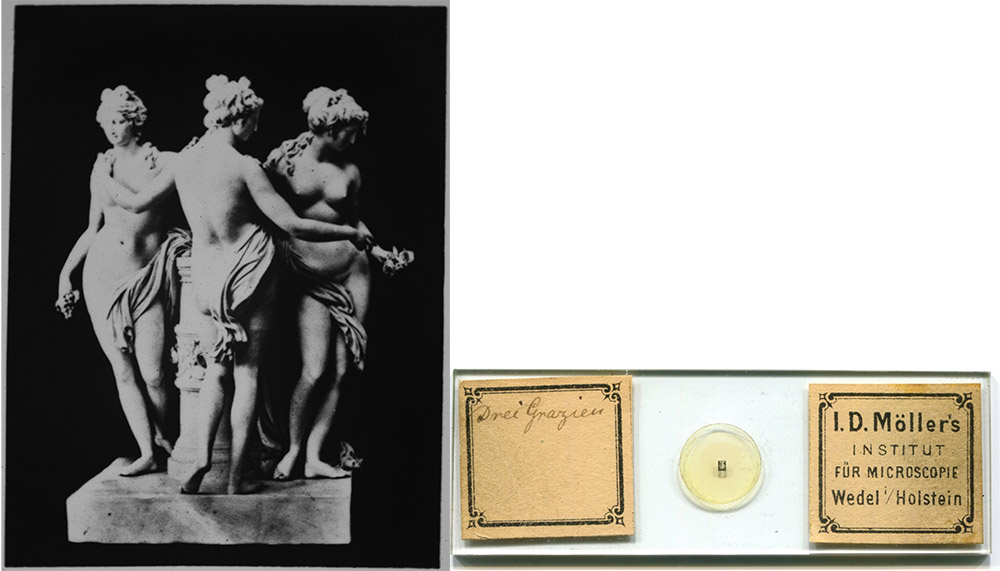
Figure 3.
A Bausch and Lomb-labeled microphotograph, “Apollo and Daphne”, is stylistically identical to a J.D. Möller microphotograph, “Drei Grazien” (“Three Graces”). Möller produced numerous microphotograph slides during the late 1800s, and so is the prime candidate for the maker of microphotographs that were retailed by B. & L.
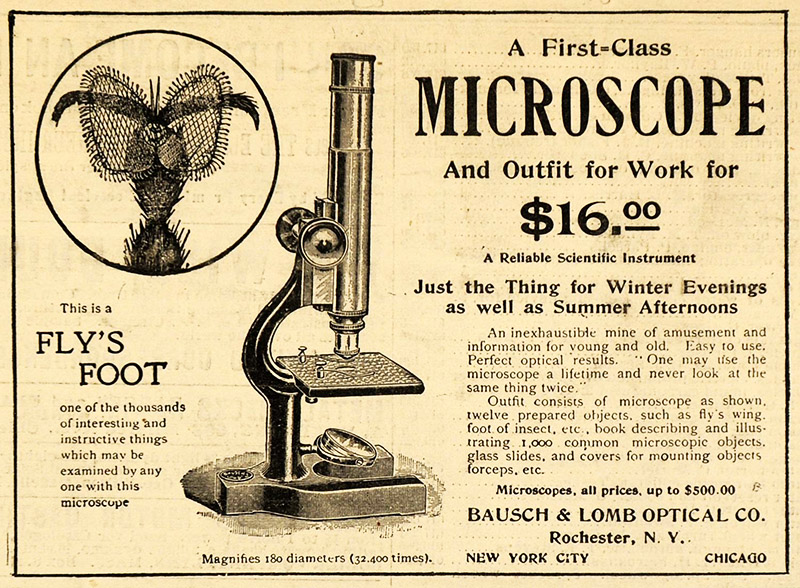
Figure 4.
A circa 1896 advertisement. Purchase of this Bausch and Lomb microscope included “twelve prepared objects”.
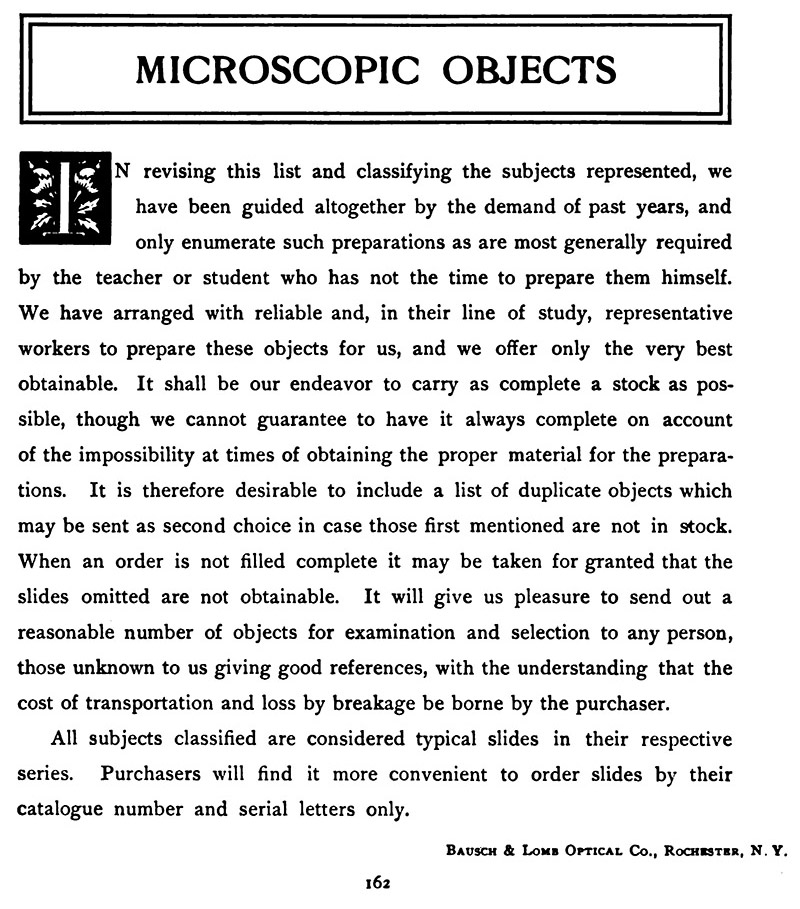
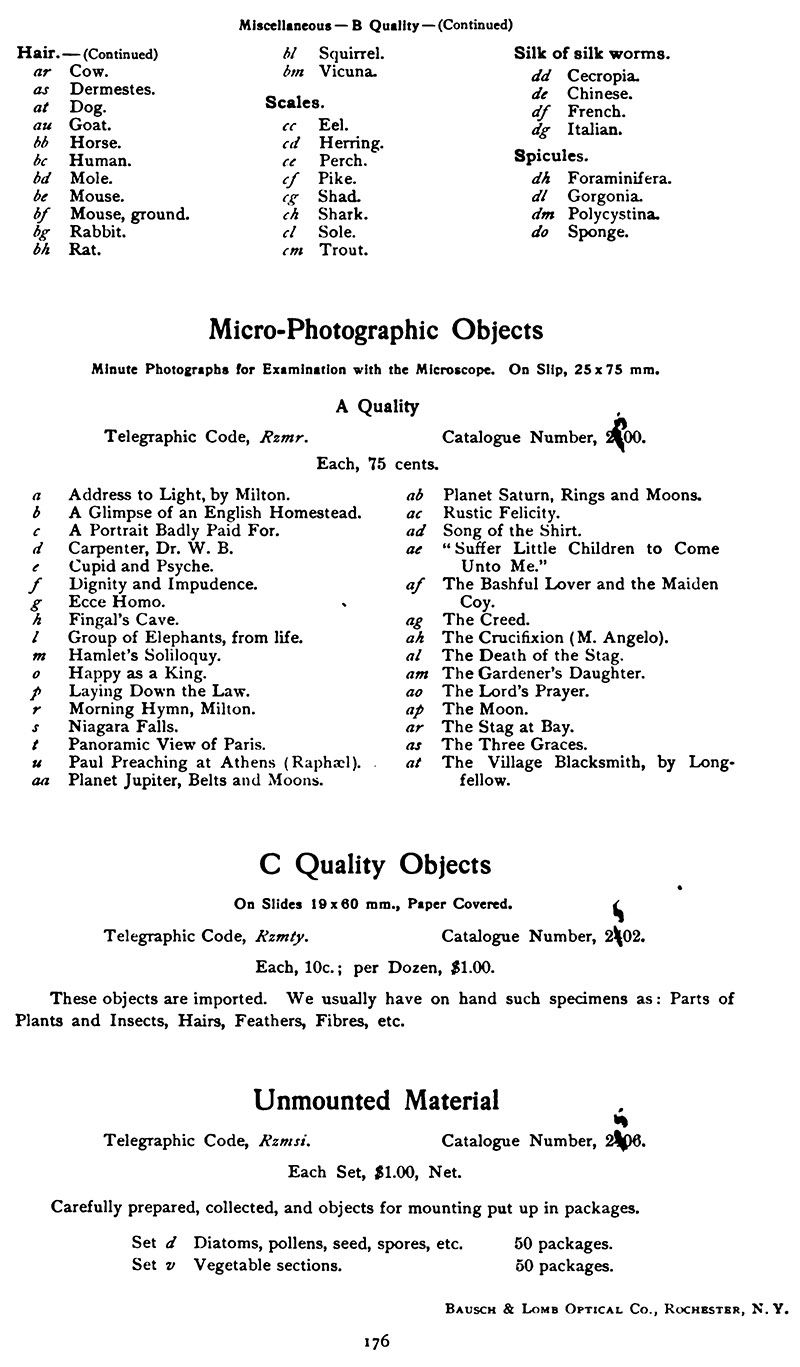
Figure 5.
Excerpts from Bausch and Lomb’s 1900 microscope catalogue, which included 13 pages of prepared microscope slides. The introductory paragraphs indicate that Bausch and Lomb had been supplying prepared slides for many years.
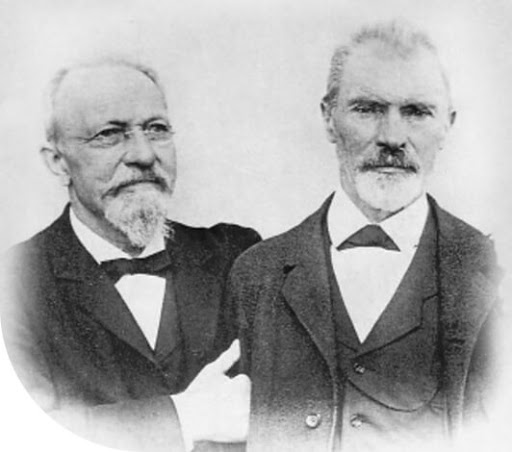
Figure 6.
John Jacob Bausch (1830-1926) and Henry Lomb (1828-1908).
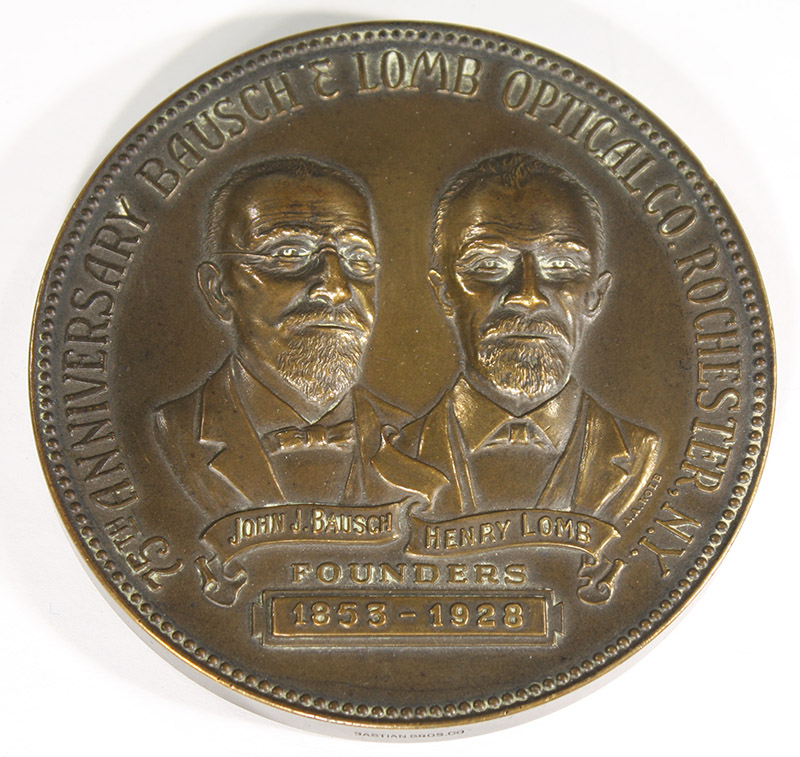
Figure 7.
Brass medallion comemorating Bausch and Lomb's 75th anniversary, in 1928. Solid metal, measuring 3 inches / 8 cm in diameter.
Some links to historical Bausch & Lomb microscopes:
Antique Microscopes: http://www.antique-microscopes.com/siteindex.html
Microscope Antiques: http://www.microscope-antiques.com/
Bausch and Lomb: https://www.bausch.com/our-company/about-bausch-lomb/the-bausch-lomb-story








